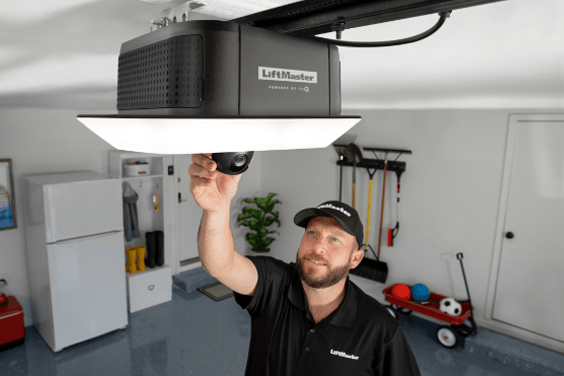Your garage door, controlled by a Liftmaster opener, is an essential part of your daily life, providing convenience and security. However, when it refuses to close, it can be a source of frustration and concern. In this article, we will delve into the possible reasons why your Liftmaster garage door won’t close and explore solutions to resolve this issue.

Common Culprits for a Refusing Garage Door
Why is your Liftmaster Garage Door Acting Up?
Before we dive into solutions, let’s understand the potential causes behind your Liftmaster garage door’s refusal to close.
- Safety Sensor Obstruction: Liftmaster garage doors are equipped with safety sensors that detect obstructions in the door’s path. If there’s something in the way, like debris or even a misaligned sensor, the door may not close.
- Remote Control Issues: Problems with the remote control or the keypad can prevent the garage door from closing. It could be a weak battery, a malfunctioning remote, or interference with the signal.
- Track Misalignment or Damage: The garage door’s tracks can become misaligned or damaged over time, hindering its operation. If the tracks are not in the right position, the door may struggle to close.
- Limit Setting Problems: Liftmaster garage door openers have limit settings that determine how far the door should open and close. If these settings are incorrect, it can result in the door not closing all the way.
Now that we have identified potential causes, let’s explore how to troubleshoot and resolve these issues.
Troubleshooting Steps
1. Check Safety Sensors
Inspect the area near the bottom of the garage door for any obstructions that might be blocking the safety sensors. These sensors are usually located on each side of the door’s frame. If they’re misaligned, gently adjust them to face each other properly. Clean any debris or dirt that may be blocking their view.
2. Examine the Remote Control
If the door refuses to close with the remote control, first, check the batteries. Replace them if they’re weak. If the issue persists, try reprogramming the remote according to the manufacturer’s instructions. Ensure that there’s no interference from other electronic devices in the area.
3. Inspect the Tracks
Carefully examine the garage door tracks on both sides. Look for any visible signs of misalignment, dents, or damage. If you find any, use a rubber mallet to gently tap the tracks back into place. Make sure the tracks are level and properly secured to the wall. If there’s extensive track damage, consider consulting a professional technician.
4. Adjust the Limit Settings
Liftmaster garage door openers have limit settings that control how far the door moves during its cycle. If these settings are incorrect, it can result in the door not closing all the way or opening too far. Consult your Liftmaster opener’s manual for instructions on how to adjust the limit settings. This can often solve the problem.
Preventive Measures
Keep Your Garage Door Trouble-Free
Preventing issues is often simpler than fixing them. Here are some preventive measures to ensure your Liftmaster garage door operates smoothly:
- Regularly test the safety sensors by placing an object in the door’s path. It should reverse when it detects an obstruction.
- Clean the tracks and the sensors to ensure they function correctly.
- Replace remote control batteries as needed and keep a spare set on hand.
- Conduct routine maintenance on your garage door and opener, following the manufacturer’s guidelines.
Conclusion
A Liftmaster garage door that won’t close can be a vexing issue, but with the right troubleshooting and maintenance, you can address the problem effectively. Whether it’s a safety sensor obstruction, remote control problems, track misalignment, or limit setting errors, there are steps you can take to get your garage door back in working order. To ensure your garage door operates safely and efficiently, don’t hesitate to consult a professional technician for complex issues. By following these guidelines and practicing preventive maintenance, you can enjoy the convenience and security of a fully functional Liftmaster garage door for years to come.



Leave a Reply